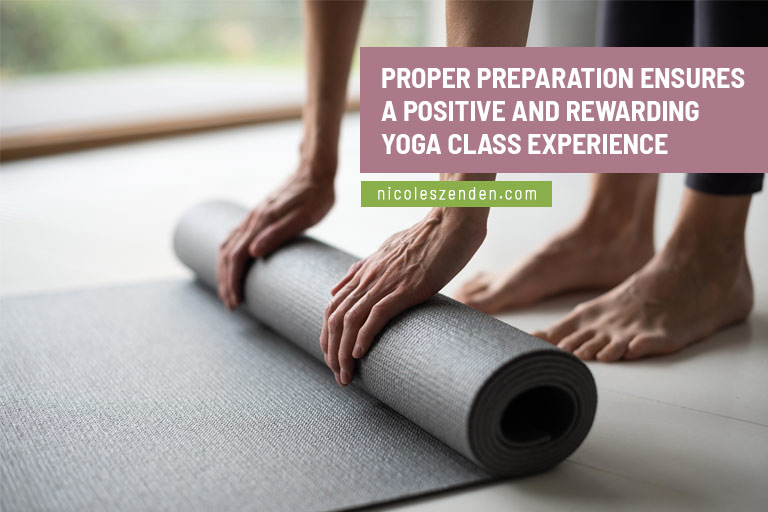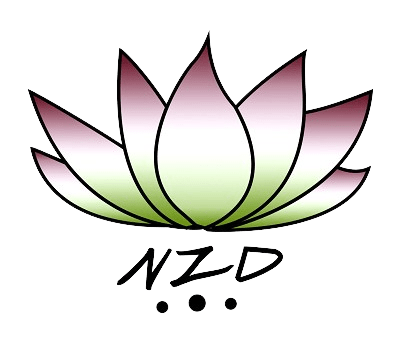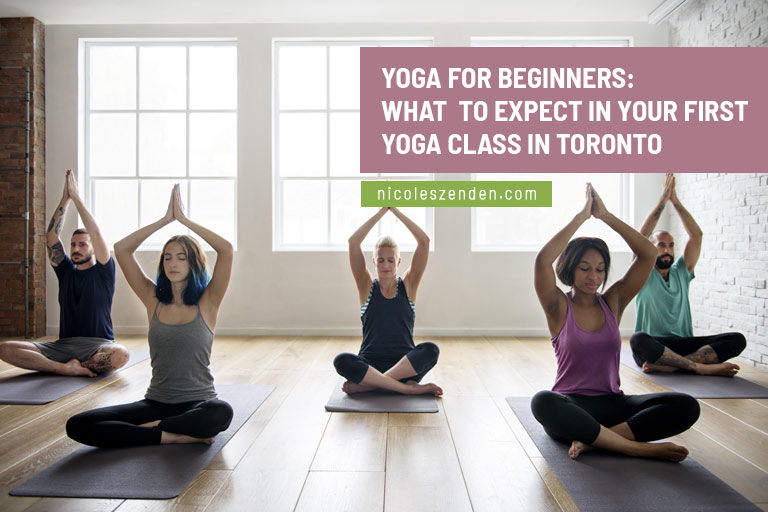Yoga is a physical, mental, and spiritual practice that was invented over 5,000 years ago. Today, it is a popular form of exercise and meditation that provides many benefits, such as improved flexibility, strength, and balance.
If you’re new to yoga and live in Toronto, you may be wondering what to expect in your first yoga class. Attending your first class can be intimidating. But don’t worry—in this blog, we’ll walk you through what to expect in your first yoga class in Toronto.
Preparing for Your First Yoga Class in Toronto

Preparing for your first yoga class in Toronto can be quite exciting. However, there are certain steps you need to take so you’re ready for your first class. We’ve rounded up a few tips and advice to ensure you have a positive and rewarding experience.
- What to Wear
- Wear comfortable, stretchy clothing that allows for a full range of motion.
- Avoid clothing that is too loose or baggy, as it may get in the way during poses.
- Consider dressing in layers, so you can easily adjust your temperature as needed.
- Remove any jewelry or watches that may get in the way.
- What to Bring
- Yoga Mat: A typical yoga studio in Toronto has mats available to borrow or rent, but it’s a good idea to bring your own if you plan to attend classes regularly.
- Towel: Some people like to use a towel to wipe away sweat during class.
- Water: Stay hydrated by bringing a water bottle.
- An Open Mind: Yoga is a practice of self-discovery and growth. Come to class with an open mind and be willing to learn.
- How to Choose a Class
- Look for beginner-friendly classes or classes labelled as “gentle” or “restorative yoga” for beginners.
- Read class descriptions carefully to ensure the class matches your skill level.
- Consider the style of yoga being taught. Some styles, such as vinyasa or power yoga, may be more challenging for beginners.
- Ask for recommendations from friends or family who practice yoga.
What to Expect in Your First Yoga Class

Your first yoga class in Toronto should not be nerve-wracking.
- Basic Yoga Poses
Your first yoga class will likely involve a series of basic poses. Some of the most basic yoga for beginners poses include:
- Downward-facing dog
- Warrior I and II
- Child’s pose
- Forward fold
- Mountain pose
- Cat-Cow
- Tree pose
- Baby pigeon pose
The yoga instructor will guide you through each pose, offering modifications and adjustments as needed. Don’t worry if you’re not able to execute every pose perfectly. Yoga is a practice, which requires enough time to build strength and flexibility.
- Breathing Techniques
Yoga places a strong emphasis on breathing techniques, known as pranayama. In your first class, the teacher may guide you through simple breathing exercises, such as inhaling and exhaling deeply or practicing alternate nostril breathing. Learning to control your breath can help you stay calm and centred both on and off the mat.
- Meditation and Relaxation Techniques
Many yoga classes end with a period of meditation and relaxation. The teacher may guide you through a visualization exercise, such as imagining a peaceful beach or mountain landscape. During this time, you’ll be encouraged to let go of any stress or tension and simply focus on your breath.
- Modifications for Beginners
Yoga is a practice that can be adapted to meet the needs of every individual, regardless of age, size, or ability.
The teacher may offer modifications for certain poses to make them more accessible for beginners. Don’t be afraid to ask for help or guidance if you’re unsure of how to modify a pose.
- Explanation of Common Yoga Terms
Yoga has its own vocabulary, and your teacher may use words or phrases that may be unfamiliar to you. Here are some of the most common yoga lingo for beginners:
- Namaste – This is a greeting that is commonly said at the end of each yoga class by the instructor and the students. It means “I honour the light within you.”
- Asana – This is a yoga pose.
- Chakras – These are the 7 energy centres located along the spine, extending from the base of the pelvis to the crown of the head.
- Prana (life force or energy) – To enhance and strengthen your prana, concentrate on the coordination of your breathing patterns and physical movements until they are seamlessly integrated.
- Pranayama (breath control) – It refers to the connection between breath and yoga movement.
- Drishti (focused gaze) – This is the practice of gazing at a steady point during a yoga session.
- Mantra – This is a word or phrase repeated during the yoga practice, like a chant.
If you’re unsure of the meaning of a term, don’t hesitate to ask the teacher for clarification.
Tips for Your First Yoga in Toronto
- Listen to Your Body
The essence of yoga is about attuning yourself to the needs and limitations of your body. However, if you experience pain or discomfort, modify or skip the pose altogether. Never push yourself beyond your limit as it can cause injury.
- Communicate with the Teacher
Before the class starts, be sure to tell your yoga instructor if you have any injuries or existing medical conditions. If unsure of how to do a pose, ask for help or guidance. Keep in mind that the teacher is trained to provide support or guidance.
- Do Not Compare Yourself to Others
Yoga is a personal practice and everybody’s flexibility is unique. If you are not as flexible as the person next to you, do not worry! Never compare yourself to others. Instead, focus on your own practice and progress.
- Stay Hydrated
To maintain proper hydration levels, drink plenty of water before, during, and after your yoga class. However, do not drink large amounts of water during class as it can make you feel uncomfortable and disrupt your practice.
After Your First Yoga Class
- Practice Self-Care After Yoga Practice
Be sure to rest and take care of your body and mind after each yoga class. You can do this by gently stretching or hydrating with water or herbal tea. Eat a healthy balanced meal or snack to replenish the energy level of your body. Incorporate self-care practices, such as meditation, reading, or indulging in a warm bath, to prioritize your overall well-being outside of yoga class.
- Reflect on the Experience
Take some time to reflect on your experience in your first yoga class.
How did your body feel during and after class? What did you enjoy most about the class? What would you like to improve upon in future classes?
- What to Do Next
If you enjoyed your first yoga class, consider making it a regular part of your routine. Look for classes that fit your schedule and skill level, and consider trying different styles of yoga to find what works best for you. Practice at home using online videos or apps.
Remember that yoga is a practice — it takes time and dedication to see progress, so be patient and keep practicing.
Attending your first yoga class can be a daunting experience, but it doesn’t have to be. By preparing ahead of time, knowing what to expect in class, and following some simple tips, you can have a positive and rewarding experience. Keep in mind that yoga is a practice of self-discovery and growth, and be open to learning and trying new things. With dedication and persistence, you can enjoy the many benefits that yoga has to offer.
Immerse yourself in a sanctuary of calming energy and guided yoga classes. Let go of stress and cultivate a sense of clarity and focus. Schedule your first yoga session with Nicole’s Zen Den; contact us by dropping an email at info@nicoleszenden.com
in.

